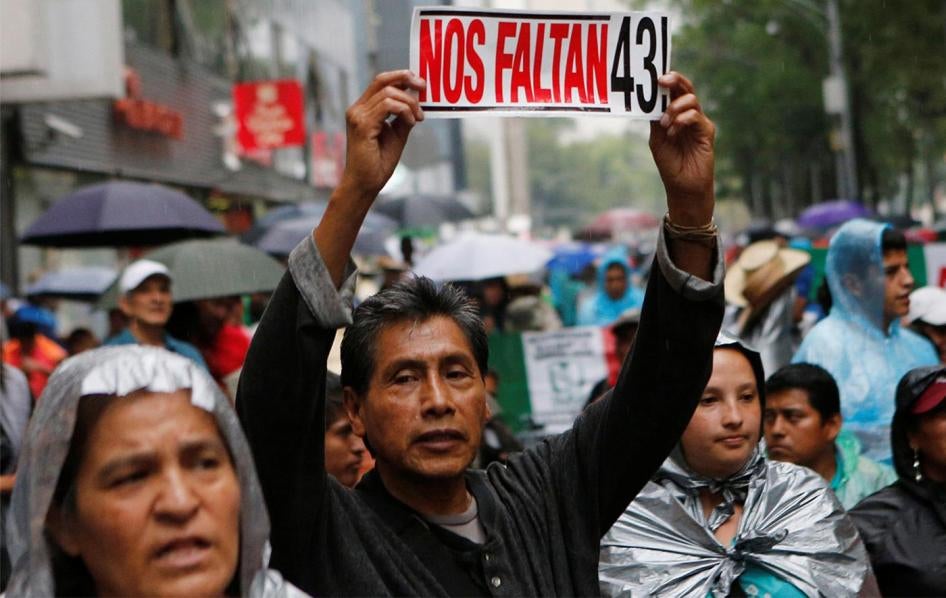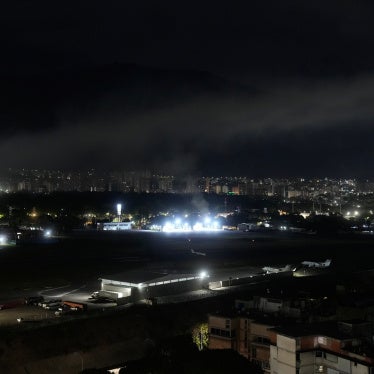Torture will be on the agenda of the Mexican Congress this month. Curbing the widespread practice should be an urgent priority for all branches of the Mexican government. Its impact on Mexico has been devastating, not only for the many individual victims, but also for the credibility of the criminal justice system itself.
Take, for example, the case of Taylin Wang and “Pedro Salazar,” a kidnap victim for whom we’ll use a pseudonym to protect his identify and privacy.
Wang came to Mexico from her native Peru seven years ago in search of a better future for her children. She found work selling clothes, then opened a Peruvian restaurant. She married a Mexican, and together they were raising her 7- and 9-year-old daughters and 16-year-old son. When the federal police raided their home in February 2014, she was 7-weeks pregnant.
Recently, Wang provided Human Rights Watch with her account of the raid, in the hope—she said—that her story might help prevent others from a similar fate.
Wang and her husband, who had gone to bed late after watching a horror movie, were awakened by police bursting into their residence around 3 a.m. The officers did not present an arrest warrant. Instead they pulled her out of bed, called her a “whore,” and demanded to know where her “lover” was. They took her husband to another room, where they were holding the three children.
One of the officers stripped off Wang’s nightgown and forced her onto the bed. With the other officers looking on, he raped her with his gun, mashed her breasts with his hands, and asked if she liked it.
The officers took Wang and her husband to a federal police installation. They refused to allow Wang to call the Peruvian consulate. They blindfolded her, beat her for hours, and forced her to sign a blank paper. “I scribbled whatever I could so they would stop beating me,” she told us.
Wang was then driven to the Attorney General’s Office, where she noticed she was bleeding, as if having her period, only far more heavily. The bleeding continued for days, even after she was transferred to a prison in Nayarit state. She later got confirmation that she had a miscarriage.
An official medical report dated four days after her arrest notes only “injuries that do not put her life at risk” and that “will heal in less than 15 days.” Yet an independent evaluation by a psychologist in October 2015 concluded that she had been tortured. And she continues to receive medical treatment to this day, including for the severe back pain she has had since the raid.
In October 2014, prosecutors charged Wang with participating in a kidnapping ring. The evidence against her included the testimony of the police and two other alleged members of the ring. The police claimed they had detained her, not at 3 a.m. in her home, but at 10 a.m. in another location, where they also found a kidnap victim, handcuffed and blindfolded. The other suspects claimed she had participated actively in their criminal activity.
The prosecutors also presented testimony by the kidnapping victim, Pedro Salazar. Salazar gave a horrifying account of being taken at gunpoint, beaten, kicked, and forced, with threats of asphyxiation, to repeat the ransom demand to his relatives: pay the kidnappers US$2.5 million or they would cut off his fingers.
There is absolutely no question that Mexican authorities should ensure that the people responsible for this terrible crime are brought to justice. But there is good reason to doubt the allegation that Wang was one of them.
The prosecution’s case is full of holes. First, there is the highly dubious claim that the police had known a crime was taking place in the house where they detained Wang —and so entered without a warrant— in part because they had encountered her husband outside and he had informed them, of his own volition, that he was holding a kidnap victim inside.
Second is the fact that three of Wang’s neighbors testified that she wasn’t at that house but rather at her own, corroborating her account of the raid. The prosecutor discounted their testimony claiming with no clear evidence that the neighbors must have been coached on what to say.
Third is the fact that the prosecution relied on Salazar’s positive identification of Wang’s voice (he had never seen her during his captivity) in a procedure which included no other female voices for comparison.
Finally, most disturbingly, the prosecution relied on incriminating statements that the other alleged gang members had retracted, saying they had been tortured and were false.
It wouldn’t be the first time Mexican prosecutors built a case on coerced testimony. The authorities’ use of torture has marred investigations into the forced disappearance of the 43 students from Ayotzinapa and the killing of 22 civilians in Tlatlaya in 2014. And those are just the famous cases. Over the past decade, Human Rights Watch has documented scores of cases of torture by security forces in Mexico—beatings, asphyxiation, electric shocks, and sexual violence, among other tactics, often with the aim obtaining information or coercing incriminating statements.
This use of torture to “resolve” cases makes it far more difficult for crime victims and their families—whether it’s Salazar or the families of the Ayotzinapa students—to get the justice they deserve. These brutal methods produce fundamentally unreliable information, destroy the credibility of the judicial process, and, too often, result in the jailing of innocent people.
In December 2015, President Enrique Peña Nieto proposed a general law on torture that would, among other things, reinforce existing prohibitions on using torture to obtain evidence. Last year, the Senate passed an improved, though not perfect, version, but the Chamber of Deputies then weakened several key provisions in its own version of the bill. Last month, the UN High Commissioner for Human Rights’ office in Mexico published an analysis of this draft legislation, identifying provisions that must be modified to comply with Mexico’s human rights obligations. In the legislative sessions that begin this month, Congress has an opportunity to incorporate these modifications and pass a stronger bill.
Given Mexico’s deplorable record of torture, Congress should pass a strong law to curb the practice. Yet real change will only occur if and when Mexican authorities—from the president to the prosecutors, courts, police, and military—feel compelled to take anti-torture laws far more seriously.
In the meantime, Pedro Salazar has yet to receive a reliable account of who kidnapped and brutally abused him. And in a women’s prison in southern Mexico City, Taylin Wang awaits the outcome of a fundamentally flawed criminal prosecution for a crime she insists she didn’t commit.









